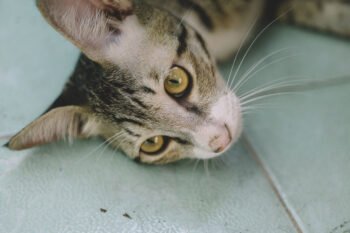Did you know that 8 to 10 percent of the population is allergic to cats? If you’re one of those individuals, then the itching, watering eyes and sneezing associated with cats are all too familiar.
Now, a new vaccine holds promise of not just diminishing cat-allergy symptoms, but of curing the problem altogether. An added perk is that, unlike drugs that come with a laundry list of scary side effects, this vaccine has next to none, according to its creator Mark Larche and his team. Here, Larche, a professor at McMaster University’s School of Medicine, explains how the cutting-edge new vaccine could help you or your cat-allergic friends and relatives.
Cat Allergy Cause and Effect
It is a common myth that cat fur itself causes all of the sneezing and wheezing in those who suffer from pet allergies. What’s on the fur, however, turns out to be more important. “Allergies to cats are caused by proteins that are secreted by the cat and spread onto its fur by grooming,” says Larche. “Our vaccine is composed of synthetic fragments of one (the most important one) of these proteins.”
To identify the protein and to learn more about it, he and his team analyzed blood samples from 100 patient volunteers who are allergic to cats. Doing this allowed the scientists to see which components of the protein activate T-cells in certain people. T-cells are helper cells that fight infection in the immune system.
“Allergies are a form of hypersensitivity,” explains Larche. “We all make immune responses to allergens that we encounter in the environment, but most people make a tolerant response that results in no inflammation. However, for reasons that are incompletely understood, some people make the wrong kind of response — an allergic response.” By providing low doses of the allergen — tweaked so they don’t contain the parts that may stimulate the immune system — the researchers came up with the new vaccine.
How Patients Receive Treatments
The vaccine is still only available in drug trials, but it appears that four to eight doses may be required in the first year, with possibly none required for subsequent years. Larche thinks a needle-less injection system could be used to administer the needed doses in the future.
Stephen Durham, head of the Allergy and Clinical Immunology department at Imperial College London, says the data about the new vaccine is very encouraging. “A significant proportion of cat owners develop allergy to their cats, which varies from bothersome eye and nasal symptoms through to moderate-severe disease or even life-threatening asthma attacks,” says Durham. “Avoidance strategies may be impossible or refused.”
Durham mentions that traditional allergy shots pose a risk of serious side effects, “particularly in asthmatics.” This new vaccine promises to provide “good symptom-control and disease remission, while avoiding the risk of side effects,” he adds. Cat-allergy sufferers both with and without asthma have participated in the trials, and so far so good.
Other Ways of Curbing Cat Allergies
Until the new vaccine becomes widely available, the Humane Society of the United States suggests that you try these five steps if your household includes one or more cat-allergy sufferers:
1. Clean your house often to remove dust and cat dander. Vacuum or wash curtains, furniture covers, pet beds and other items.
2. Bathe your pet often. Consult with your veterinarian to make sure that you are doing this correctly and using products that will not deplete your cat’s skin and fur of necessary oils.
3. Set up an allergy-free area. Close this area, such as the bedroom, off to your cat.
4. Consider purchasing a HEPA air cleaner, perhaps just for the allergic individual’s bedroom. Central heating and cooling systems can also be outfitted with stronger filtration systems to help clean the air.
5. Make sure it’s a cat allergy. Many things in the home can cause allergic reactions. Even people who are allergic to cats can be allergic to other things, so be sure the individual receives a thorough checkup from an appropriate specialist.
Some very good news is that the same research know-how that resulted in the new cat-allergy vaccine is being applied to allergies caused by dust mites, ragweed, grass, birch tree and moulds. In the future, most allergies may therefore figuratively bite the dust.







